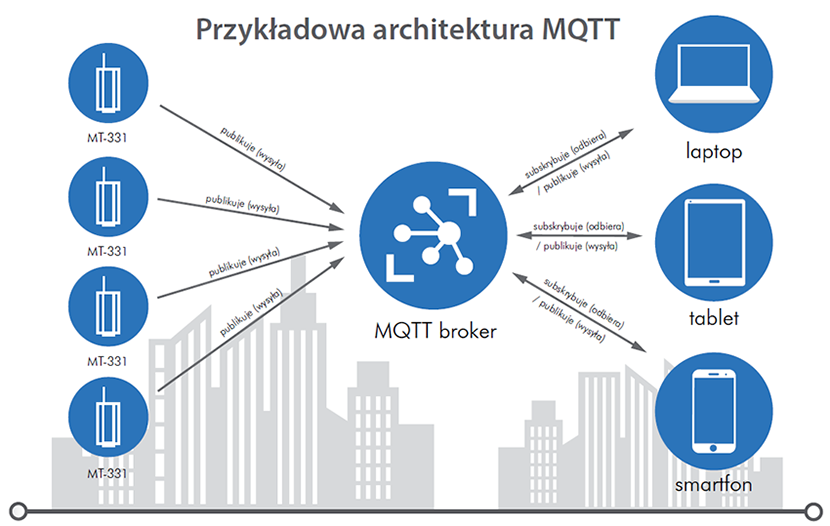MQTT protocol in MT-331 telemetry modules
The dynamically developing world of the Internet of Things continues to be affected by the lack of standardization of transmission protocols. Recently, however, the MQTT protocol (Message Queue Telemetry Transport) has been gaining in importance. The specification of MQTT protocol matches very well to the requirements of broadcasting in the world of distributed devices. This is not yet binding on the standard, but its multiple implementations make many manufacturers look favourably on its using in M2M applications and the Internet of Things. Also, Inventia decided to implement the MQTT protocol for the first time in one of its products.
We chose the MT-331 module for this purpose because it operates well in IIoT (Industrial Internet of Things) applications. The possibility of adapting the type and number of inputs / outputs to current needs, energy-saving mode allowing battery supply, energy storage in an internal lithium battery, the possibility of direct power from solar panels, built-in data logger, built-in 2G/3G modem and a reliable metal housing are only a few of the advantages of this model. The ease of integration of MT-331 modules with various IT cloud solutions currently provides support for the MQTT protocol.

MQTT is a very light and easy-to-use data transmission protocol that does not require a large transmission bandwidth and allows you to save energy in battery-powered devices. The data transfer uses a publication/subscription pattern in which the sender (e.g. sensor or telemetry module) sends data to the broker acting as a proxy server, and the recipients communicate with the broker under the subscription of topics. After receiving a new message from the sender, the broker informs the involved customers who previously subscribed to the topic. Each client can be both the sender and the recipient. Thanks to the standardization, the availability of ready-made brokers and client libraries, MQTT protocol support can be easily implemented on various platforms. Thanks to this, the MT-331 module can be a standard data source for systems of various suppliers. The MT-331 module uses Transport Layer Security (TLS) encryption to ensure confidentiality and integrity of transmitted data.
The MQTT protocol is a completely new approach in data transfer. The existing methods have always been based on a direct connection between the sender and the recipient, which meant the necessity of multiplying the transmission if the data were to reach many recipients. In MQTT, this task is taken over by the broker’s software, which receives the data published by the source and already independently handles their sending to recipients subscribing to them, also taking care of their caching until the subscriber is available. With this approach, creating a one-to-one or one-to-many networks, is possible without any restrictions, also in cases where battery-powered modules are available only at limited time intervals.
Accepting the MQTT protocol by users does not mean finding a panacea for the standardization problem, as it is still not possible to directly connect two devices from different manufacturers. The broker always has to be the broker’s software, and the user decides what and in what form he wants to send and receive, which is de facto responsible for correct protocol configuration and data interpretation. However, this does not diminish the advantages of the adopted solution and gives hope for the ever-easier exchange of data between the massively emerging IIoT solutions.





